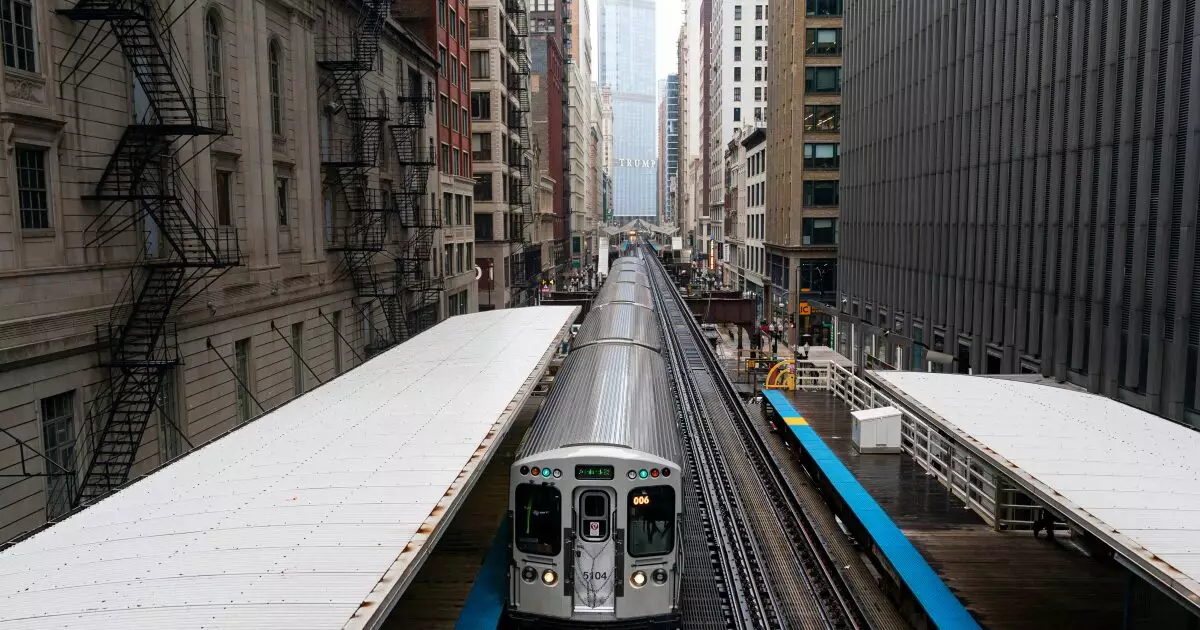Moody’s recent downgrade of the Chicago Transit Authority’s (CTA) financial outlook from stable to negative lays bare an alarming reality: the agency is grappling with an impending operational crisis. The CTA’s projected operating deficit of approximately $550 million by fiscal 2026—amounting to a staggering 25% of its operational budget—signals not just a fiscal shortfall but also a potential destabilization of one of Chicago’s core transportation systems. While it may appear that federal pandemic relief funds can provide temporary relief, this is a ticking time bomb that could unravel the fabric of public transit in the Windy City.
The gloomy assessment from Moody’s asserts that the CTA’s financial health is heavily reliant on dwindling federal funds, which were meant as a safety net during the pandemic. However, as these funds are exhausted, the agency appears incapable of addressing its budget gap through fare increases or prudential cuts. The situation doesn’t just reflect mismanagement or insufficient foresight; it illustrates a structural flaw in how public transportation systems are funded, particularly in the global crisis aftermath.
Labor and Legislative Impasse
Compounding the CTA’s financial woes is the ongoing friction among legislators regarding governance reforms aimed at improving operational efficiency. State Senator Ram Villivalam’s proposals to consolidate transit governance under a new Metropolitan Mobility Authority met significant resistance from transit agency heads. Instead of galvanizing support for necessary reforms, these proposals have highlighted a disheartening lack of collaboration among stakeholders who should be working towards a common goal: a sustainable public transit system for millions of Chicagoans.
The Regional Transportation Authority’s counterplan advocating for $1.5 billion in combined state and local funding stands as a pragmatic approach to addressing the funding crisis. However, without solid political backing and a willingness to break from traditional governance structures, innovative solutions are bound to remain in bureaucratic limbo. The political landscape is riddled with partisan divisiveness, and the lack of cooperative policymaking significantly hampers the prospects for elevating the CTA’s financial status.
Taxation Extremes: A Necessary Evil?
Moody’s highlighted that the path to funding stability likely hinges on raising new taxes or obtaining additional aid from state coffers. This notion strikes a controversial chord, especially in today’s fiscal climate, where taxpayers are already burdened and wary of additional taxation. The idea of expanding taxes as a means to support transit systems might seem draconian, yet it may prove unavoidable if we wish to sustain a vital service that supports the economy and quality of life for many residents.
Ultimately, the dilemma revolves around whether Chicagoans are willing to accept any tax increases for public transit, particularly when past governance has often failed to demonstrate accountability and efficiency. The trust deficit between the public and government is palpable; thus, any tax-based solutions must be carefully structured to ensure that funds are utilized effectively, striking a balance between fiscal responsibility and public service commitment.
Rethinking Future Strategies for Transit Economic Viability
As we stand on the edge of this fiscal precipice, it is essential to rethink strategies that can fortify the CTA’s budgetary integrity without over-relying on fare increases or state funding alone. Considering the ongoing trends of declining ridership post-pandemic, we should explore models that allow the CTA to bolster its revenue through diversified avenues such as corporate partnerships, improved advertising strategies within the transit space, or perhaps even introducing new technology-driven services that enhance commuter experience and engagement.
Moreover, if the CTA embraces innovative technologies to improve operational efficiency, it might not just quell financial concerns but also transform public perception. A shift in narrative, where the CTA is seen as a dynamic player in transit modernization, could stimulate community support and drive engagement for new funding avenues, including state and federal grants.
The clouds are indeed gathering over the CTA, creating an urgent need for holistic solutions that reflect our modern societal dynamics. The path forward requires courageous leadership willing to collaborate, innovate, and make the tough decisions necessary to secure the future of public transit in Chicago. The stakes are high, and the countdown has begun.


Leave a Reply